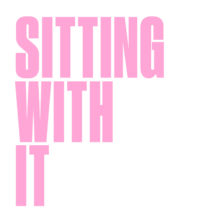In 1973, feminist film theorist Laura Mulvey published an important essay, ‘You Don’t Know What is Happening, Do You, Mr Jones?’ Appearing in the British feminist magazine Spare Rib, the Mr Jones being addressed was the artist Alan Jones and his series of sculptures ‘Women as Furniture’. In these sculptures, life-size realistic model figures of women dressed in fetish-wear doubled as a hatstand, a table and a chair. At the ICA in 1978 protesters let off stink bombs at a Jones exhibition, and on International Women’s Day in 1986 a demonstrator poured paint stripper over Chair in the Tate, attempting to literally deface it. The sculptures became infamous and deeply criticised in feminist circles in the UK and beyond. Happily for Jones, however, the series of sculptures have been acquired by many adoring collectors. The Tate even acquired Chair for its permanent collection in 1981 (although it does not remain on permanent display).
As its name suggests, Chair can be sat on. In the 1970s a German collector posed sat on the sculpture for the Sunday Times Magazine. But sitting with the sculpture is a much more uneasy affair.
In the essay Mulvey’s point is that Jones’ sculptures are not actually the obvious and well-trod play on the ‘exhibitionism of women’ and the ‘voyeurism of men’. They are images of (psychoanalytic) fetishism. Their subject is the displacement of castration anxiety by fetish for the masculine unconscious. Thus, Mulvey writes, ‘[t]he achievement of Allen Jones is to throw an unusually vivid spotlight on the contradiction between woman’s fantasy presence and real absence from the male unconscious world.’[1] Jones’ artworks, although comprised of many, many images of woman, are nothing about women themselves. To sit with women, for example, is precisely what (as Chair reveals) Jones’ unconscious cannot allow. Mulvey’s rallying cry at the end of her essay states: ‘The time has come for us to take over the show and exhibit our own fears and desires.’[2]
At the 2001 Venice Biennale, Belgian filmmaker Chantal Akerman was among several filmmakers who was commissioned to create an installation exploring the relationship between film and the visual arts. Woman Sitting After Killing (2001) is a video installation comprising seven monitors that replays in a loop the last sequence of an earlier film by Akerman, Jeanne Dielman, 23 quai du Commerce, 1080 Bruxelles (1975). In the original film we watch for three hours and twenty minutes as Jeanne (Delphine Seyrig) cooks, takes a bath, has dinner with her adolescent son, shops for groceries, and looks for a missing button. Jeanne’s predictable schedule, and Akerman’s minimalist precision, deflects our attention from the brief signs of Jeanne’s afternoon sex work, until it all begins to unravel.
It is a film to sit with in the sense that Akerman’s film simultaneously allows viewers to experience the materiality of cinema, its literal duration, and addresses the meaning given to a woman’s work. There is one three-minute-long scene in the film where Jeanne does nothing but peel potatoes. After unexpectedly having an orgasm with a client, Jeanne gets dressed, tucks her shirt into her skirt, picks up a pair of scissors, and stabs the man. The film’s last seven minutes show Jeanne sitting at the highly polished dinner table, a flickering light across her face.
As Akerman returns to this scene twenty-six years later for gallery and not the cinema, the change of exhibition context and presentation for this closing moment brings with it a shift in interpretation and effect. The title points backwards – towards an unseen event, to the ‘killing’ prior to the ‘sitting’. Although divorced from the rest of the film, the installation multiplies the opportunity to encounter ‘the Woman’ seven times as she sits. It suggests that what is important is not the murder but the sitting down afterwards.
Dr Elspeth Mitchell, Lecturer
School of Fine Art, History of Art and Cultural Studies
[1] Laura Mulvey, ‘Fears, Fantasies and the Male Unconscious, or “You Don’t Know What is Happening Do You Mr Jones?”’, Visual and Other Pleasures, p. 7. (Palgrave MacMillan, 2009).
[2] Mulvey, p.13.
